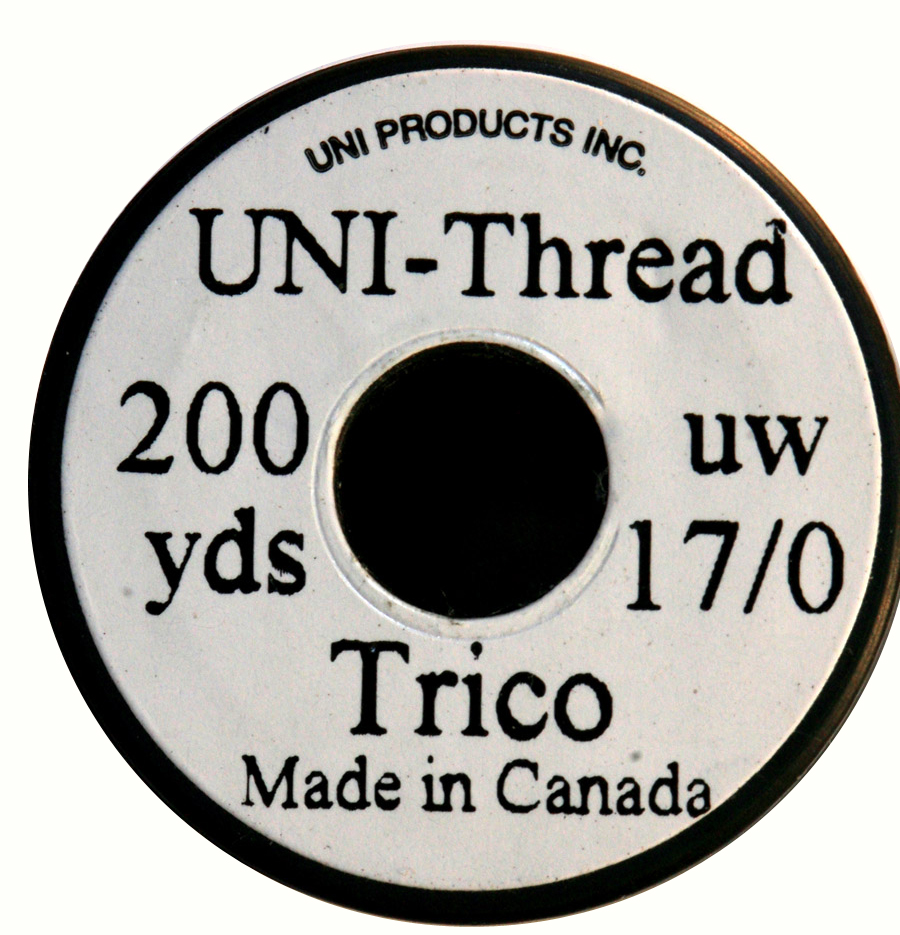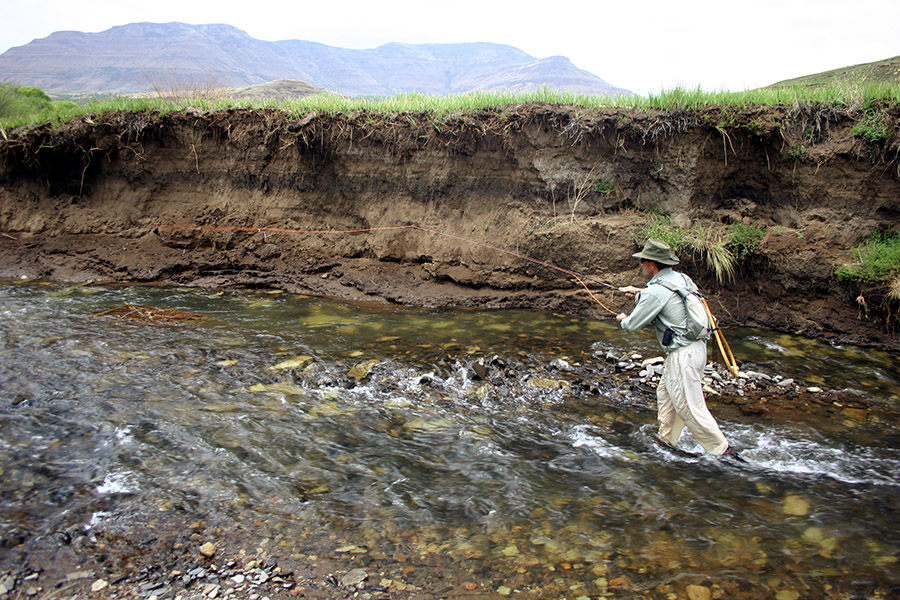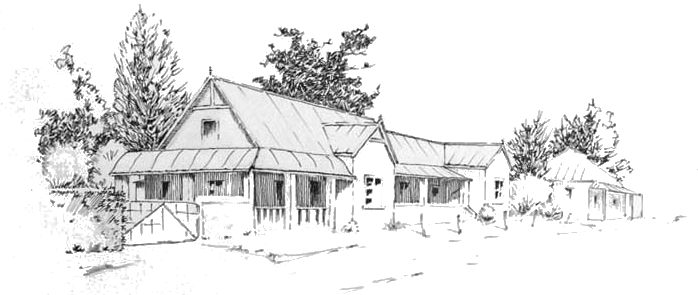This week I want to look at the concept of twisting CDC in a split thread. Well, actually , in a loop of sorts. Conventionally, when people spin CDC they split the thread. A nice multi-fibred thread like the Gordon Griffiths sheer is ideal in this regard, as it lies flat and splits easily. The problem I have with the method however is the following. Once the CDC is twisted up and you’re about to whip finish the fly, your thread is so twisted that small neat heads become a real challenge. Also in many cases the thread actually breaks at this point. Sure, you could untwist it, but I don’t like this idea. I get the feeling that one will be untwisting the actual CDC as it were, thus rendering the fly less compact and less tightly spun.
The other thing I’ve noticed with splitting thread is that it's not always a very user friendly technique, especially if you have the shakes. And believe me old age is what it is, not that I’m old ,but I’ve taught enough mature gentleman to realise that when you get older you need to roll with the punches and adapt.
If you like splitting the thread and it works for you, go for it! I prefer another method, nothing revolutionary either really. Instead of splitting the thread I make a nice good old fashioned dubbing loop with some 17/0 Uni-Thread Trico.
Click in images to enlarge them

The stuff is uber thin and flat which helps keep bulk down. Also having a nice big loop to work with gives you lots of wiggle room and space to work in. I feel this method is a lot more user friendly than splitting the thread. I can also achieve a tiny unobtrusive head, especially useful on smaller patterns where keeping the eye of the hook open becomes a real challenge.
The pattern I want us to tie this week is an adaption of Fred Steynberg’s shuck emerger. Fred trims a hackle feather in the shape of a shuck, quiet an interesting idea.

Fred Steynberg on the Sterkspruit River, Eastern Cape Highlands. (Photo Tom Sutcliffe)
I’ve fished these shuck emergers on numerous occasions and can tell you that you’ll get some tricky fish on these things. It's not the kind of fly that’s good for prospecting with. Well, not for me at any rate. Its more the kind of fly you use when you get a fish that is being difficult. In the Cape we sometimes encounter this ,where putting up to 10 flies over a single fish to get him can become a reality. It’s in these situations that this fly really shines for me.
Ok let's tie the little bugger.
I like them small, #18 is just about right for this style of fly. Use a nice, light wire emerger hook.
To trim the cock hackle, gently stroke the fibres back against the natural flow of the fibres. Using a sharp scissors cut against the grain as it were, be careful, messing it up is easy; less is more.

Before I tie in the shuck I lay a nice foundation of thread. Mind you, a thin layer of a very fine dubbing is probably better. Start just on the bend before you tie the body on. Make sure you tie the body on a nice smooth foundation of thread. Tying the cut hackle in can be tricky. My suggestion is,don’t try to tie it on top of the hook shank for starters. Using a soft-loop gently tie it on the side of the shank closest to you and when pulling on the thread let it slip up on top of the shank. The thread tension moves the hackle into position for you. This technique is very good for positioning flat materials.
If you’re still battling one could also flatten the feather stem at the tie-in point using a fine pair of flat nosed pliers. The flat stem will be more accommodating in terms of tying it in. This is a trick I learnt tying salmon flies. Golden pheasant crest feathers need to be treated in exactly the same way. Tying a cylinder (the feather stem in cross section) to a cylinder (the hook in cross section) as it were is tricky. The one tends to want to roll off the other one, flatten the feather stem and the problem evaporates!


The shuck body tied on top of the hook shank. Notice the nice translucent feel the hackle gives you, very nice

Run the thread to the middle of the remaining part of the shank . Now tie in a post. I’ve used Poly Yarn here. Run the thread back to the point where you tied the hackle shuck in.
Next I prepare my CDC, using upwards of three feathers. I stack them on top of each other and clip them in a magic tool. Cut the fibres off the feather stems close to the stem so you have ample fibre length to spin.
Ideally you want to do this with CDC that has long fibres that are nice and dense.

Now I make a good old-fashioned half hitch and then make two wraps around the base of the loop I’ve just created to secure it in place. Run the thread from the bobbin holder back to 'no man's land' ( 2mm behind the hook eye).

Next I insert my CDC in the loop and open the clip or magic tool as it were. Keep tension on the loop so fibres don’t fall out.

Using a dubbing twister I spin the CDC into a bottlebrush. Do this by holding the index finger of your left hand just behind the CDC letting the twister hang down towards you at a 90 degree angle. Very important, if you just let the loop hang down the CDC will twist up against itself when you’re spinning it. That’s why some guys battle to get their flies looking 'fluffy' for want of a better word. It's got to do with angle. I twist the twister anti clock wise when viewed from above allowing my index finger to help me create that angle.

Now wrap your 'bottle brush' forward. Don’t be neat here . You can brush fibres back before you wrap. Some CDC fibres might get trapped. Don’t worry about it. Tie the loop off once you’ve gotten to 'no man's land'. I try to tie off on the twisted thread loop as opposed to the twisted CDC if that makes any sense. You get a neater head doing this. My preoccupation with neat heads stems from the fact that they make my life easier when I’m actually trying to thread the fly. It's just practical to finish flies off nicely. Whip finish.

Another tip at this point, and I didn’t do it on this fly, but I probably should have. Take a nice soft toothbrush and brush the CDC out. This will release any trapped fibres. I got this trick from the Junior Boland fly-fishing team. They all have two tooth brushes; one for teeth and one for CDC. Now that is what I call having one's priorities in check!

I hope this helps. Explaining tying via the written word can be tricky. Actually showing you is easier. I know I make it sound technical at times, but it's actually so basic. I just explain it in depth so that you get the small nuances. Details make a huge difference.
Until Next time, Fly for Now! G



